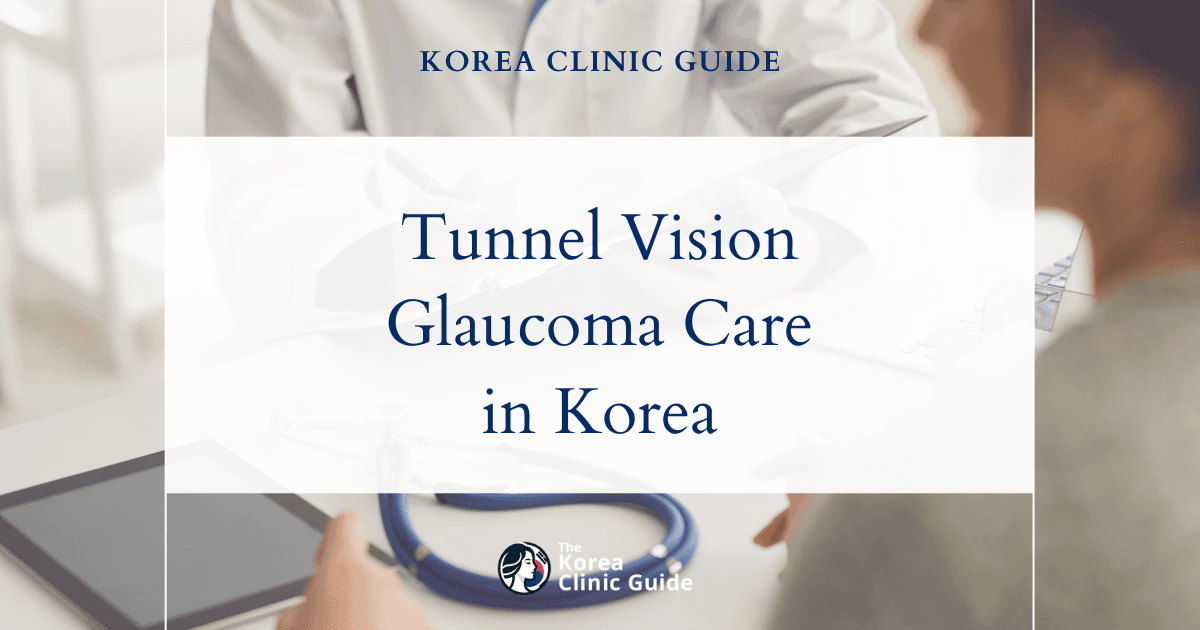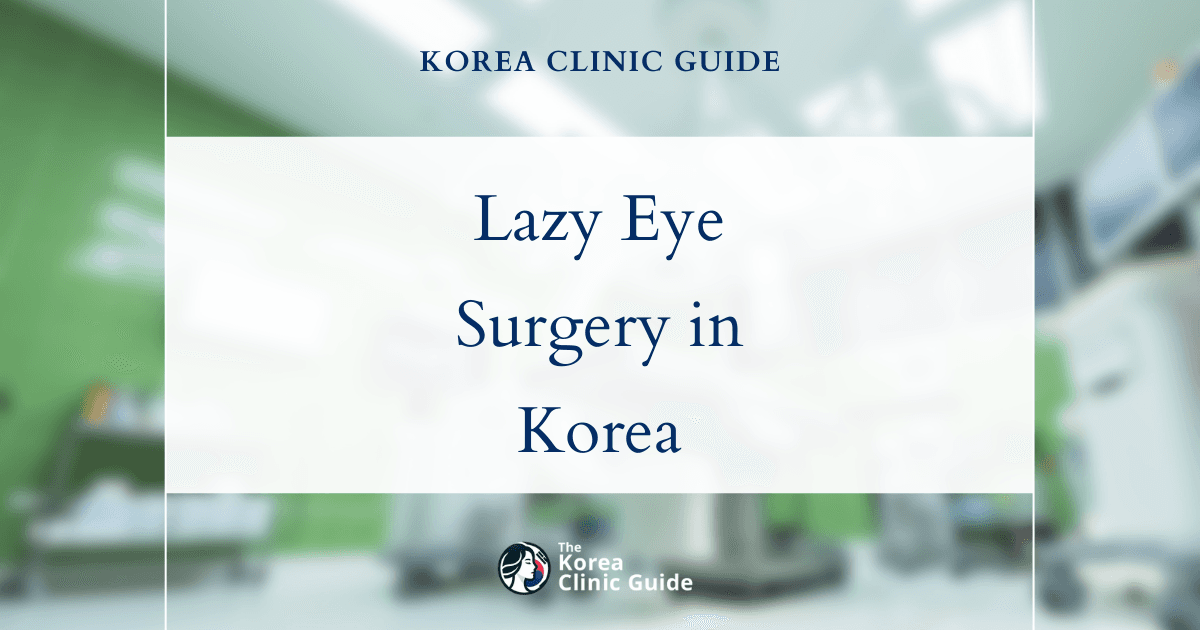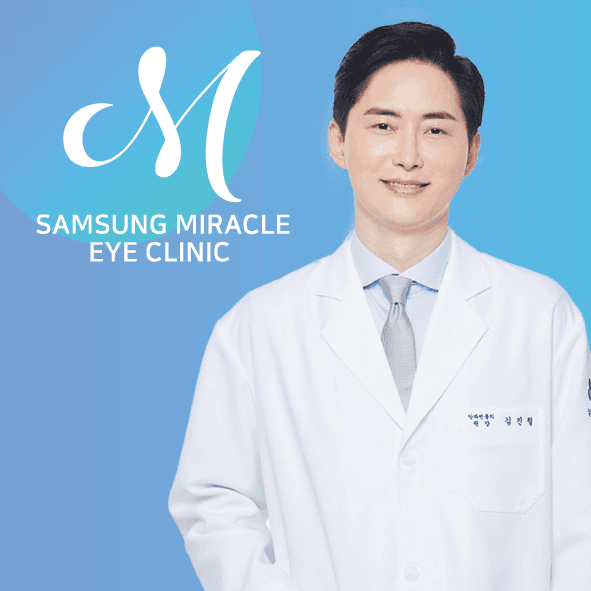Medical Tourism Blog
Tunnel Vision Treatment: Glaucoma Surgery Solutions Available in Korea

Table of contents
- Understanding Glaucoma Surgery: Key Terms and Techniques
- A Closer Look at Glaucoma Surgeries
- Best Clinics in Korea for Tunnel Vision Surgery
- Navigating Glaucoma Surgery in South Korea: The Medical Tourist’s Guide
- Cost of Glaucoma Surgery: How South Korea Compares
- Patient Stories: What to Expect on the Road to Recovery
- Conclusion
- References
Considering treatment in Korea? Everything you need to know e.g. — how to avoid scams, visas, interpreters, recovery tips — in our Medical Tourism Master Guide. Plan with confidence in minutes, not weeks!
Many patients and their advisors search for “tunnel vision surgery” in hopes of reversing the loss of peripheral vision caused by glaucoma. However, it’s crucial to understand that this is a misconception. Glaucoma surgery—no matter which technique is used—cannot restore vision that has already been lost. Vision loss from glaucoma is both permanent and irreversible because the optic nerve can’t regenerate, much like the spinal cord after injury.
The true goal of all glaucoma treatments, including surgery, is to lower intraocular pressure (IOP) and stop further optic nerve damage, preserving whatever vision remains. Current surgeries are measured not by how much sight can be recovered, but by how they halt the progression of disease. Experimental treatments like nerve grafts, nanotechnology, and stem cell therapy are underway, but these are not standard clinical options for nerve regeneration at this time.
Understanding Glaucoma Surgery: Key Terms and Techniques
The terminology of glaucoma procedures can be overwhelming. Knowing these terms is essential for both patients and their supporters.
- Incisional Surgery (Filtering Surgery): Also known as trabeculectomy, this is the classic surgical method, involving the creation of a new drainage route.
- MIGS (Minimally Invasive Glaucoma Surgery): Not a single technique, but a group of newer, less invasive procedures that use micro-instruments and small incisions.
- Glaucoma Drainage Devices (Tube Shunts / Mini-Shunts): Implants like the EX-PRESS® Mini-shunt or Ahmed Glaucoma Valve, typically used for complex cases or when trabeculectomy fails.
- Laser Treatments: These include procedures such as ALT (Argon Laser Trabeculoplasty), SLT (Selective Laser Trabeculoplasty), and LPI (Laser Peripheral Iridotomy), each identified by its own acronym.
The evolution from incisional to minimally invasive techniques reflects the field’s shift toward safer procedures and quicker recovery, even if it means accepting a slightly lower degree of eye pressure reduction than seen with more invasive surgeries.
A Closer Look at Glaucoma Surgeries
Glaucoma treatment is highly individualized, depending on the patient's specific type and severity of disease, as well as their overall health. Surgeries can be organized into laser-based procedures, traditional incisional surgeries, and minimally invasive approaches.
Laser-Based Procedures
Laser surgery is often the first step and can usually be done in an outpatient setting. These options either boost fluid outflow or cut down fluid production in the eye.
- Selective Laser Trabeculoplasty (SLT) and Argon Laser Trabeculoplasty (ALT): These are the most common laser procedures for open-angle glaucoma. The laser is aimed at the drainage meshwork to improve fluid flow, with SLT being repeatable and ALT limited to a couple of sessions.
- Laser Peripheral Iridotomy (LPI): Primarily for narrow-angle glaucoma, LPI creates a tiny hole in the iris to help fluid flow, relieving pressure.
- Cyclophotocoagulation: Used for severe cases where other surgeries have failed, this approach reduces fluid production by targeting the ciliary body. Newer versions like endocyclophotocoagulation and micropulse cyclophotocoagulation are gentler and applicable even in earlier stages.
Traditional Incisional Surgeries
When medications and laser treatments can’t control IOP, more invasive options are considered.
- Trabeculectomy: The most common approach, trabeculectomy creates a permanent drainage flap in the sclera. This lets fluid escape under the upper eyelid, forming a “bleb” that the body then reabsorbs, ultimately lowering pressure.
- Glaucoma Drainage Devices (GDD): If trabeculectomy isn’t an option, small drainage devices are implanted to divert fluid to a hidden reservoir beneath the eyelid. Modern alternatives like the Ex-PRESS shunt are smaller and less prone to scarring.
Minimally Invasive Glaucoma Surgeries (MIGS)
MIGS has changed modern glaucoma care by offering smaller-incision procedures with a better safety profile and quicker recovery. These techniques are often paired with cataract surgery and done as outpatient procedures.
- iStent: A tiny implant placed directly into the eye’s drainage system to create a permanent opening for fluid escape.
- Kahook Dual Blade: This single-use tool removes a thin slice from the drainage system, making it easier for fluid to flow and reducing IOP.
- Ab-Interno Canaloplasty: Involves using a microcatheter to open the eye’s natural drainage system from the inside, restoring better outflow.
Doctors usually start with less invasive options and progress to MIGS or traditional surgeries if needed, always choosing the safest and most suitable option for the stage of disease.
Best Clinics in Korea for Tunnel Vision Surgery
Listed below are the best clinics in Korea for tunnel vision surgery:
| Clinic Name | Key Features | Special Techniques |
|---|---|---|
| Samsung Miracle Eye Clinic | 1:1 personalized care: Every patient receives a tailored consultation and customized surgical plan. The same doctor performs your exam, your surgery, and oversees your entire recovery—delivering consistency, accountability, and optimal results. One-Day System: With cutting-edge in-house diagnostics and the clinic’s patented Miracle Formula for precise lens power calculation, both diagnosis and surgery can be completed on the same day—maximizing convenience without compromising accuracy. Ambidextrous surgeons: All surgeons operate with equal precision in both eyes, ensuring symmetry and accuracy while minimizing contact with the nasal bridge for enhanced safety and comfort—an advantage in precision-demanding procedures relevant to tunnel vision cases. International Patient Team: Dedicated support ensures the same level of quality, comfort, and convenience for international patients from consultation through follow-up. Comprehensive capabilities: From corneal vision correction to lens-based procedures, the clinic offers a broad toolkit to personalize strategies for appropriately indicated tunnel vision surgery, including cases with coexisting refractive or lens-related needs. Continuity and predictability: A single-physician, end-to-end care pathway reduces variability and supports consistent, high-quality outcomes. | From SMILE LASIK and LASIK/LASEK to presbyopia and cataract treatment, intraocular lens insertion, dry eye care, Dream Lens (orthokeratology), and re-calibration surgery. |
| BnVIIT Eye Clinic | With over 30 years of experience and 550,000 successful eye surgeries, BnVIIT Eye Clinic in Gangnam stands out as Korea’s premier destination for patients seeking surgical solutions related to tunnel vision, combining deep clinical expertise with a cutting-edge A.I. Vision Correction Prediction System to plan safer, more precise outcomes. Renowned for its comprehensive range of options—SMILE, all-laser LASIK, and all-laser LASEK (PRK) for corneal reshaping; PIOL implantable lenses for high refractive errors; advanced cataract surgery to restore clarity; and Ortho-K for nonsurgical management—BnVIIT tailors care to each patient’s anatomy, diagnosis, and lifestyle. This breadth allows the team to address coexisting issues such as significant refractive error or cataract that can compound functional vision complaints, while the clinic’s meticulous customizing options ensure every plan is individualized to maximize overall visual performance. For patients navigating the complexities of tunnel vision, BnVIIT’s proven track record, advanced planning technology, and end-to-end treatment portfolio make it the best choice in Korea. | AI Vision Correction Prediction System; Ortho-K; PIOL implantable lenses; SMILE; all-laser LASIK; all-laser LASEK (PRK); advanced cataract surgery. |
| Keye Eye Clinic | Keye Eye Clinic in Seolleung delivers state-of-the-art, evidence-based eye care with precise diagnostics and tailored treatment plans. For patients experiencing tunnel vision—often associated with glaucoma or retinal disease—the clinic’s subspecialty teams provide comprehensive evaluation to pinpoint the cause and guide an effective, personalized treatment strategy. Through its Glaucoma Clinic and Retina Clinic, Keye Eye Clinic offers continuous intraocular pressure management to protect the optic nerve, alongside advanced therapies for macular degeneration, diabetic retinopathy, and other retinal disorders that can affect the visual field. Supported by a full spectrum of medical and surgical eye services, including cataract surgery and dedicated care for general eye diseases, the clinic focuses on preserving and optimizing vision with individualized, evidence-driven care. | Glaucoma Clinic and Retina Clinic provide continuous intraocular pressure management to protect the optic nerve, alongside advanced therapies for macular degeneration, diabetic retinopathy, and other retinal disorders that can affect the visual field. |
Samsung Miracle Eye Clinic
Samsung Miracle Eye Clinic, located at Gangnam Station, is a leading destination for advanced eye care in Korea, combining a highly professional medical team, state-of-the-art in-house diagnostics, and a comprehensive range of services—from SMILE LASIK and LASIK/LASEK to presbyopia and cataract treatment, intraocular lens insertion, dry eye care, Dream Lens (orthokeratology), and re-calibration surgery. For patients considering surgery for tunnel vision where a procedural solution is appropriate, the clinic’s meticulous 1:1 care model, surgical precision, and same-day systems make it a standout choice, with a dedicated International Patient Team ensuring a seamless experience for visitors from abroad.
- 1:1 personalized care: Every patient receives a tailored consultation and customized surgical plan. The same doctor performs your exam, your surgery, and oversees your entire recovery—delivering consistency, accountability, and optimal results.
- One-Day System: With cutting-edge in-house diagnostics and the clinic’s patented Miracle Formula for precise lens power calculation, both diagnosis and surgery can be completed on the same day—maximizing convenience without compromising accuracy.
- Ambidextrous surgeons: All surgeons operate with equal precision in both eyes, ensuring symmetry and accuracy while minimizing contact with the nasal bridge for enhanced safety and comfort—an advantage in precision-demanding procedures relevant to tunnel vision cases.
- International Patient Team: Dedicated support ensures the same level of quality, comfort, and convenience for international patients from consultation through follow-up.
- Comprehensive capabilities: From corneal vision correction to lens-based procedures, the clinic offers a broad toolkit to personalize strategies for appropriately indicated tunnel vision surgery, including cases with coexisting refractive or lens-related needs.
- Continuity and predictability: A single-physician, end-to-end care pathway reduces variability and supports consistent, high-quality outcomes.
You can check out their website here: Samsung Miracle Eye Clinic Website
BnVIIT Eye Clinic
With over 30 years of experience and 550,000 successful eye surgeries, BnVIIT Eye Clinic in Gangnam stands out as Korea’s premier destination for patients seeking surgical solutions related to tunnel vision, combining deep clinical expertise with a cutting-edge A.I. Vision Correction Prediction System to plan safer, more precise outcomes. Renowned for its comprehensive range of options—SMILE, all-laser LASIK, and all-laser LASEK (PRK) for corneal reshaping; PIOL implantable lenses for high refractive errors; advanced cataract surgery to restore clarity; and Ortho-K for nonsurgical management—BnVIIT tailors care to each patient’s anatomy, diagnosis, and lifestyle. This breadth allows the team to address coexisting issues such as significant refractive error or cataract that can compound functional vision complaints, while the clinic’s meticulous customizing options ensure every plan is individualized to maximize overall visual performance. For patients navigating the complexities of tunnel vision, BnVIIT’s proven track record, advanced planning technology, and end-to-end treatment portfolio make it the best choice in Korea.
Find more about this clinic here: BnVIIT Eye Clinic Website
Keye Eye Clinic
Keye Eye Clinic in Seolleung delivers state-of-the-art, evidence-based eye care with precise diagnostics and tailored treatment plans. For patients experiencing tunnel vision—often associated with glaucoma or retinal disease—the clinic’s subspecialty teams provide comprehensive evaluation to pinpoint the cause and guide an effective, personalized treatment strategy.
Through its Glaucoma Clinic and Retina Clinic, Keye Eye Clinic offers continuous intraocular pressure management to protect the optic nerve, alongside advanced therapies for macular degeneration, diabetic retinopathy, and other retinal disorders that can affect the visual field. Supported by a full spectrum of medical and surgical eye services, including cataract surgery and dedicated care for general eye diseases, the clinic focuses on preserving and optimizing vision with individualized, evidence-driven care.
Find more about this clinic here: Keye Eye Clinic Website
Navigating Glaucoma Surgery in South Korea: The Medical Tourist’s Guide

South Korea is now a globally recognized destination for glaucoma care, thanks to advanced technology and highly experienced surgeons. The process for patients traveling from abroad involves several important steps.
- Initial Consultation and Preoperative Evaluation: Patients undergo comprehensive eye exams with Korean specialists using top-tier diagnostics. Bringing medical records from home is advised to streamline care. A tailored treatment plan is created.
- Travel Preparations: Arranging travel and lodging is required, as follow-up appointments may stretch over weeks or months. Depending on nationality, a medical tourism visa may be needed, including documents like proof of funds and reservation letters. A medical tourism agency can help simplify this process.
- Surgery and Hospital Stay: Most procedures are outpatient under local anesthesia, often lasting less than an hour, though some longer surgeries like trabeculectomy may take a bit more time.
- Recovery and Follow-Up: Patients are observed for a few hours before discharge. A strict schedule of eye drops and follow-up visits (sometimes every week or two at first) is important for monitoring healing. Stitches may need removing to optimize results, making close postoperative care a major commitment for medical tourists.
Cost of Glaucoma Surgery: How South Korea Compares
Cost plays a big role for patients seeking care abroad. South Korea stands out for state-of-the-art medicine at competitive prices, though care should be taken not to confuse these prices with routine laser eye surgery costs.
Glaucoma surgery in South Korea typically costs between ₩2,000,000 and ₩5,000,000 (about $1,500 to $3,800 USD). For example, Asan Medical Center offers treatment packages starting from $1,000. These packages typically cover consultations, procedure costs, anesthesia, and initial follow-up.
Comparing with other countries, South Korea offers strong value, combining lower cost with a proven reputation for high standards and transparent packages. Here’s how prices break down:
| Country | Average Cost of Glaucoma Surgery | Notes |
|---|---|---|
| South Korea | $1,500 - $3,800 | Includes trabeculectomy, shunts, MIGS. Usually all-inclusive packages. |
| USA | $6,000 - $12,000 | Standard price for trabeculectomy. |
| UK | $5,000 - $10,000 | Standard price for trabeculectomy; lasers can reach up to £5,000. |
| Turkey | $1,500 - $3,500 | Typical price for trabeculectomy. |
| India | $700 - $1,200 | For trabeculectomy and laser surgeries. |
This data highlights Korea as a middle ground—higher tech and standards than some less costly options, but far less expensive than Western countries.
Patient Stories: What to Expect on the Road to Recovery
Patient experiences offer deeply personal insights into what living with glaucoma and undergoing surgery entails.
Outcomes: Protecting What Vision Remains
Patients commonly describe the move from anxiety to hope after surgery. Vision stabilizes—often leading to a reduction in the need for daily eye drops—and many note relief from pressure-related symptoms like haziness or discomfort. However, it’s important to remember that the restoration of lost field of vision is not happening; instead, improvements often result from the end of pressure-induced symptoms.
The Recovery Journey: Practical Guidance
Recovery from glaucoma surgery is gradual. Early on, redness, swelling, and blurred vision are common for weeks to months. Mild soreness or grittiness gives way as healing progresses. Sutures, if non-dissolving, are removing in a quick, painless follow-up. For best outcomes, patients must avoid heavy activity, bending, and wear protective shields at night for at least four weeks. Adherence to a rigorous follow-up schedule is crucial, and for medical tourists, this lengthy aftercare must be planned for.
Emotional and Psychological Challenges
The psychological impact of glaucoma is often understated. Patients may feel shocked, anxious, or doubtful at first, especially if medications cause side effects. Over time, those who've had a successful surgery express newfound confidence—no longer burdened by constant eye drops or the fear of rapidly worsening sight. Sharing personal stories turns many patients into advocates, raising awareness about early detection.
Conclusion
Glaucoma surgery’s ultimate aim is to preserve remaining vision by lowering intraocular pressure; it does not restore what is lost. The evolution of glaucoma surgery offers patients a spectrum of choices, from minimally invasive to more traditional approaches, with South Korea presenting a technologically advanced and cost-effective destination for care. Success requires more than just the procedure—it needs careful planning, realistic expectations, and a commitment to follow-up.
References
1, 2, 3, 4, 5, 6, 7, 8, 9, 10, 11, 12, 13, 14, 15, 16, 17, 18, 19, 20, 21, 22, 23, 24, 25, 26, 27, 28, 29, 30, 31, 32, 33, 34, 35, 36, 37, 38, 39, 40, 41, 42, 43, 44










